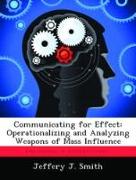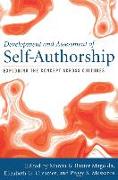Communicating for Effect: Operationalizing and Analyzing Weapons of Mass Influence
BücherAngebote / Angebote:
As far back as Sun Tzu, military thinkers have recognized the objective in war is to persuade the enemy to bow to our will. While the goal of combat is the destruction or capitulation of enemy forces, the goal of war is to influence. But the operational bias of both military leaders and analysts has often ignored this precept to concentrate on kinetic effects and more concrete measures of effectiveness. This bias threatens to skew both the conduct of war at the operational level, and force structure decisions made on the basis of military operational analyses. Weapons of Mass Influence attempt to apply the principles of persuasive and coercive diplomacy to groups, populations, and societies. Although the principles of applying coercive diplomacy to decision makers have been explored in some depth by Schelling, Pape, and others, the theoretical bases for shaping of the attitudes and behaviors of populations and large subsets of populations is much less well developed. Three major obstacles to effective influence operations can be identified: poor integration of influence operations into the planning process due to unrealistic expectations, poor definitions, and confusing or inadequate terminology, an intelligence vacuum concerning target individuals or populations and estimates of the effectiveness of various influence techniques/weapons against those targets, and a the lack of credible assessment/analysis methodologies and measures of effectiveness. A framework and lexicon for developing and analyzing influence weapons will be presented to map out the challenges of developing analytical techniques that would allow more effective development and assessment of influence campaigns.
Folgt in ca. 15 Arbeitstagen



